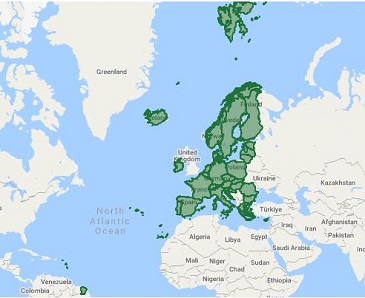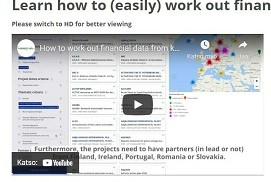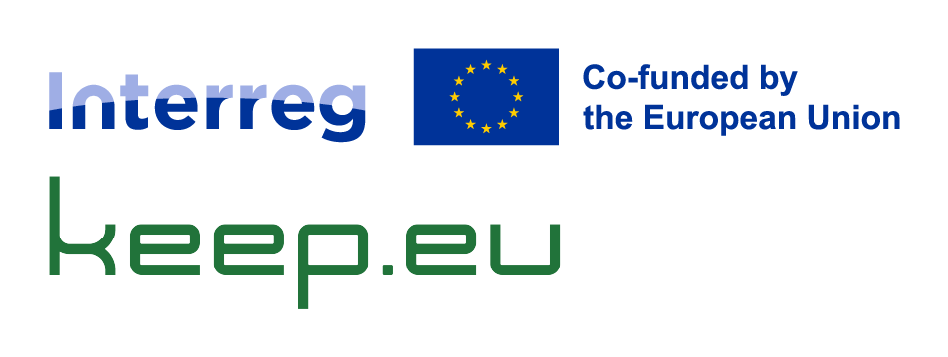News from keep.eu

One of Interact’s fields of work is the promotion of networking and thematic capitalisation.

Keep.eu recorded the first 2021-2027 Interreg project data.

We have recently added all 2021-2027 Interreg programmes to keep.eu.

We often face needs for financial information on Interreg projects…
-
2021-12-21
User trends in keep.eu in 2021
-
Looking back at 2021, the Representativeness section of keep.eu is our champion in terms of use growth. Being the only place in the world where one can find out how many Interreg, Interreg IPA CBC and ENI CBC projects, partners and programmes there are per programming period and per type of programme, the winning position is well deserved. Another part of keep.eu providing answers to the common questions of “how many” and “how much” is the Statistics section, coming in second in growth of visibility during 2021.
If we do not look at growth, but only at the number of users and sessions of keep.eu, the most sought after area of keep.eu in 2021 was Projects and documents, followed by Programmes, then by Partners, and by Countries and regions.
Encouraged by these insights and the continued growth of keep.eu use, we will continue our work to include much more information on projects, programmes and partners. Thank you for another insightful year on our joint path and see you in 2022! -
2021-11-16
The year is approaching its last weeks and the 2021-2027 programming period is getting to good speed.
-
Starting in 2022, keep.eu will contain data from 2021-2027 partners, projects and programmes. At the same time, some new functionalities will be around for building partner networks. For instance, the Participant Identification Code (PIC) will be available to enhance the identification of partner organisations. Also, project partners will be able to work out their presentations in keep.eu, proposing specific services and expertise. And just like now, they will be able to contact other partners featured in keep.eu but with more powerful contacting features (currently under study).
How will the future look like? This and more will be discussed during two hours, at the meeting of the keep.eu 3.0 Group on 25 November. This meeting is open to everyone who want to learn or have a say on how information and search mechanisms covering the whole of Interreg can be better put to the service of partners and applicants. Find more information and register here. -
2021-10-26
Project output library is growing by the day
-
You have hopefully heard that keep.eu is well on its way collecting project output documents to its database. At the time of writing this text, the number of project output documents in keep.eu was approaching 10,000. At that very same time, 20% of the projects in the database, that were closed for a minimum of six months ago, featured at least one document in keep.eu.
Keep.eu’s project output library represents an accrued guarantee that the knowledge and solutions developed by the projects will not disappear. It also provides a much easier access to the aggregated thematic expertise of Interreg, Interreg IPA cross-border and ENI CBC. The collection of these documents is made autonomously by Interact, in rounds. Users can quickly grasp how many projects per programme feature documents in keep.eu by referring to keep.eu’s Representativeness page and scrolling down to header ‘Documents’.
-
2021-10-26
Where does the keep.eu data come from?
-
This is a question we quite often receive, so let’s shed some light on the topic. The data on 2014-2020 programmes featured in keep.eu was collected by Interact and validated by each programme at the beginning of the programming period. On the other hand, data on projects and partners/partnerships is the responsibility of each programme, who can send the data to keep.eu through what is called an automatic process (described in further detail here), or through a manual process (described in further detail here). The former includes the automatic sending from the eMS. Users of keep.eu can find information on how well each programme and its projects are covered in the database either on the individual programme pages or, for a general overview, on the Representativeness page.
-
2021-10-26
Excel exports improved for better user experience
-
It is now easier to compare programmes, projects and even partners in keep.eu. Interact has worked to improve all of keep.eu’s Excel exports. Besides making results easier to compare, each exported file now features a summary page with the criteria leading to the exported results and the date and time of the export. From now on, the programmes are also able to add information to each of their projects on any links the project has to other projects financed by the programme or any other European programme. Yet another new field in projects is their relevant mentions and prizes. This will make it possible, in the future, to look for projects that received a specific mention or prize (for example, we will be able to look for Interreg projects that won the Regiostars award, among other possibilities).
-
2021-09-07
The 2014-2020 programming period produced so far close to 9,000 projects
-
The 2014-2020 programming period produced so far close to 9,000 Interreg, Interreg-IPA CBC and ENI CBC projects, throughout Europe and beyond. Of these, keep.eu contains over 7,700 projects from 97 programmes (including more than 4,000 documents and information on close to 25,000 partners). You can see all these figures detailed to the unit at keep.eu. Of all the 2014-2020 projects in the keep.eu database, just below 4,900 are closed, and we know that quite a few of the remaining ones will continue well into 2022.
At a time when Interreg is starting a new cycle, understanding projects’ achievements takes on a renewed value. So far keep.eu contains data on the achievements of 377 projects. This is less than 5% of all the closed projects in the database, and comes from only a few programmes. Within this scope we dearly appreciate the efforts taken on by the programmes to feature information on their project achievements in keep.eu.
By the end of this year keep.eu should contain the achievements of many more projects, thus contributing to a more complete picture of Interreg, Interreg-IPA CBC and ENI CBC in 2014-2020. This will be demanding for Interact, and it will also mean an important effort from each and every programme. But it will be worth it, as it will benefit all of us as a whole, and especially each programme featuring project results in the database.
Here a few examples of projects with their achievements described in the database: ACCESS FOR ALL, Cool route, Balneplogical tourism – the future of health -
2021-09-07
Horizon at Interreg, and we don’t mean a skyline
-
Interreg, Interreg-IPA CBC and ENI CBC programmes have cross-fertilised each other with ideas, and have also taken on ideas and capitalised on each other’s projects. They have also spun off projects from other ERDF objectives, and even from other funds. And, conversely, they have also contributed to developments in other objectives and funds. Now, wouldn’t it be great to know exactly which projects were spin offs of other projects, or which ones are related to which, or still which projects contributed to new ones?
Keep.eu will soon feature fields making it possible to identify projects that led to the creation of other projects. In order to widen the universe of clear connections, keep.eu will also contain data from Horizon 2020 allowing us to clearly identify the connections between Interreg and Horizon. As a by-product of this, keep.eu will also contain the entities working with Horizon. These can be interesting partners within the scope of Interreg, thus adding much value to a partner search facility containing so far close to 90 thousand partners.
A result that is already visible of the cooperation between Interact and Horizon within the scope of information exchange is the Horizon 2020 Interreg synergies – matchmaking tool, that can be referred to here.
